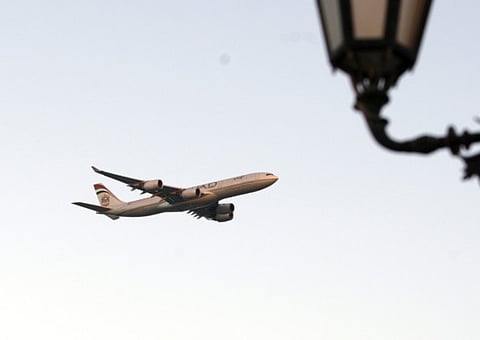Mystery plane spotted by Etihad on flight to Jakarta
Incident being investigated by Indian authorities; Etihad confirms the incident

Abu Dhabi: A mystery plane was spotted by the crew of an Etihad flight on September 7, resulting in its traffic collision avoidance system (TCAS) alarm going off loudly in the cockpit.
The alarm on EY474 enroute from Abu Dhabi to Jakarta went buzzing at 6.45am (IST) indicating that another aircraft had come dangerously close to the Etihad flight. TCAS goes off when aircrafts breach the vertical safety distance of 1,000 feet between each other, Indian media reported.
Other commercial airlines flying over the Arabian Sea about 450 to 480 kms from Mumbai’s coastline which is under aerial surveillance by global superpowers, also reportedly had their alarms going off.
When contacted, an Etihad spokesperson told XPRESS that at no point did an alarm in the cockpit go off, and “at no stage was the safety of the passengers or crew compromised.”
Authorities investigating
“The Etihad flight crew queried the presence of another aircraft to Indian Air Traffic Control on Saturday. The crew observed the aircraft on their cockpit instruments. Indian aviation regulatory authorities are now investigating the matter and Etihad Airways has offered assistance,” said the spokesperson.
He also added “at no stage was the safety of the passengers or crew compromised.”
According to Times of India, the warning came when the aircraft — not originating from or destined for Mumbai — were on aerial route P-574 between the reporting points Bodik and Adpap over the Arabian Sea and flying at 36,500 feet.
“The indication Etihad aircraft got was of an unidentified plane flying just 500 feet below it. It immediately reported this to the Mumbai air traffic control (ATC), which had no such plane on its radar nor had any information of another aircraft being supposed to be so close below the Etihad flight,” the newspaper said quoting a senior official.
However, it was reported that the breach of vertical separation was not serious enough to lead to the triggering off “resolutionary advisory” in which an automatic message is generated for pilots to immediately change course to avoid collision.
The Mumbai ATC have reported the matter to India’s directorate general of civil aviation (DGCA), which is now investigating this case.
Sign up for the Daily Briefing
Get the latest news and updates straight to your inbox



